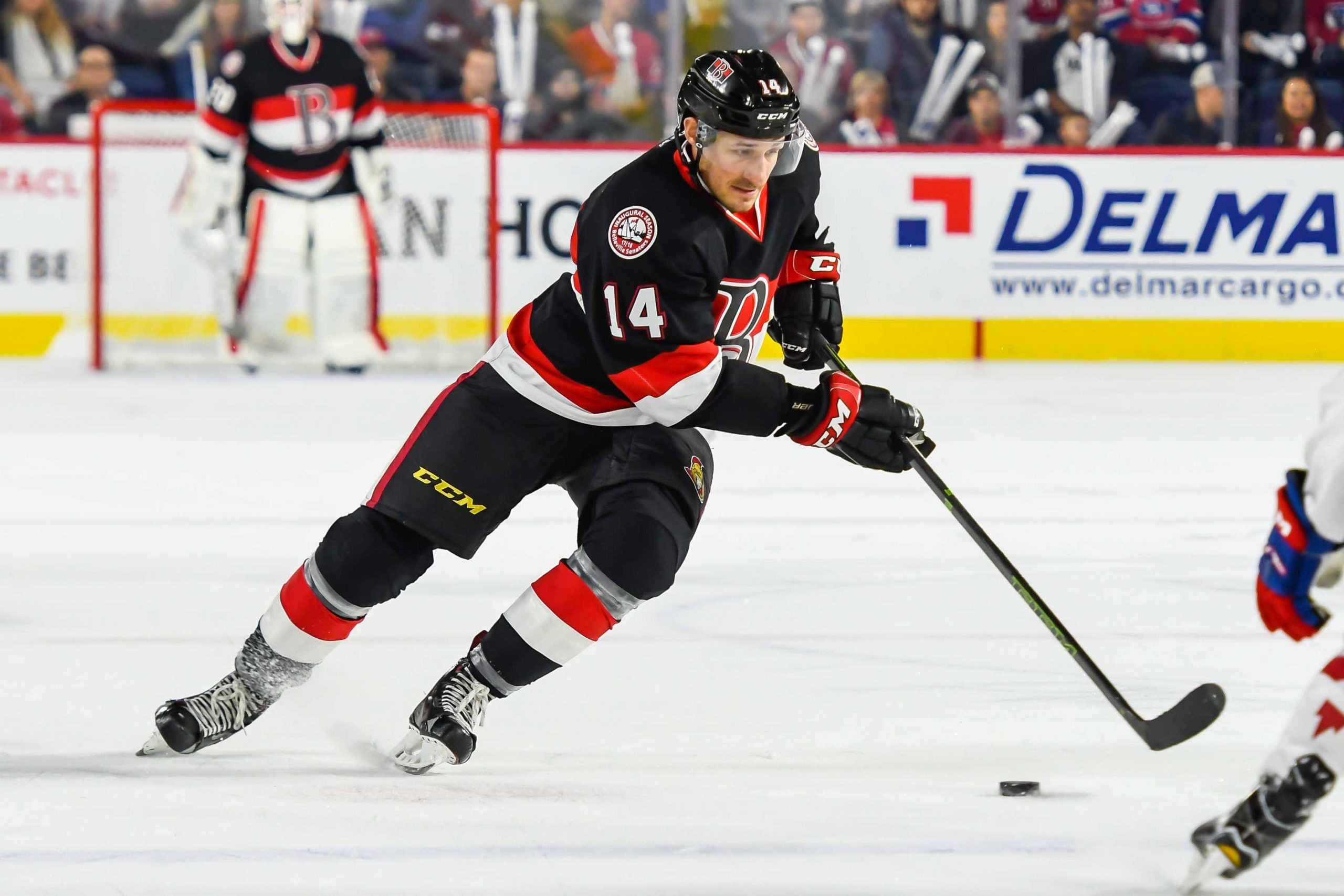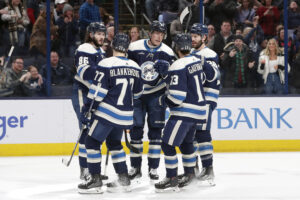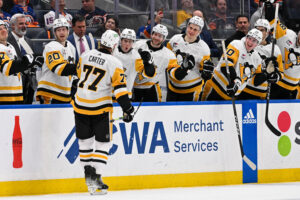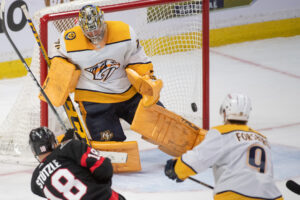NHL player development seems to always result in more questions than answers. How likely is it for a top pick to pan out? What makes a player a “steal”? Last Word On Hockey’s new series shows how to properly develop prospects from all different spots throughout the draft. This week’s piece involves draft picks in the back half of the first round and how they were used early in their careers.
NHL Player Development Of First-Round Picks
In the span of 2005 through 2015, there were 84 total selections made between 16th overall and 30th overall on forwards playing in North America. Looking at all 84 forwards, they were split into different categories. Those categories were “Forwards Deemed NHL-Ready and Brought In Immediately When Ready,” “Forwards Near NHL-Ready and Brought In Immediately When Near-Ready,” “Forwards Rushed Slightly,” “Forwards Rushed,” “Forwards Forced,” “A Little Patience,” “Patience,” and “Too Much Patience.”
There were 13 forwards who fell into the third category on the list. Of those 13 players, two made their NHL impacts in their DY+5 or later season. Those players are Jim O’Brien, Joe Colborne, and Austin Watson. In this piece, we look at O’Brien and Colborne.
Jim O’Brien
O’Brien, drafted 29th overall in the 2007 draft by the Ottawa Senators, came out of the NCAA’s University of Minnesota program. Before joining the NCAA, he played with the US National Team Development Program in his DY-1 season. In 51 games with them, he scored 17 goals and 24 assists for 41 points, for 0.804 points per game. That ranked 41st among the aforementioned 84 forwards in DY-1 production. As a freshman with Minnesota, he scored seven goals and eight assists for 15 points in 43 games, for 0.349 points per game. That ranked 83rd out of those same 84 forwards in DY production. After getting drafted, O’Brien would transition to the WHL with the Seattle Thunderbirds and play two seasons there.
In his first WHL season, O’Brien scored 21 goals and 34 assists for 55 points in 70 games, for 0.786 points per game. That ranked 57th out of 82 forwards still outside the NHL in DY+1 production. Following that season, he would play 63 games and score 27 goals and 35 assists for 62 points, for 0.984 points per game. That ranked 34th out of 70 forwards still outside the NHL in DY+2 production. After those two WHL seasons, O’Brien would play two AHL seasons before making his first true NHL impact.
AHL Time For O’Brien
In his first season at the AHL level, O’Brien recorded eight goals and nine assists for 17 points in 76 games, for 0.224 points per game. That ranked 40th out of the 46 forwards still outside the NHL in DY+3 production. The following season, he would improve drastically. O’Brien scored 24 goals and 32 assists for 56 points in 74 games, for 0.757 points per game. That ranked fourth out of the 30 forwards still outside the NHL in DY+4 production. Finally, O’Brien would get his first real taste of the NHL the following season.
How O’Brien Was Used
O’Brien would split between the AHL and NHL in his first true shot at the NHL level, in the 2011-12 season. In the AHL, he played 27 games and scored seven goals and assists for 14 points. Then, at the NHL level, he played 28 games and averaged 11:45 time on ice per game. In that role, he scored three goals and assists for six points. Even though the production wasn’t great, his underlying numbers were surprisingly solid. His even-strength offence goals above replacement (EVO) was an okay 1.7. Meanwhile, O’Brien posted an impressive even-strength defence goal above replacement (EVD) mark for a rookie, at 1.0. With his decent even-strength numbers both ways, O’Brien had modest wins above replacement (WAR) and goals above replacement (GAR) totals, at 0.7 and 3.8, respectively.
After that first taste, he would only play in the NHL in year two. However, it would only be for 29 games, where he averaged just 11:25 per game. In that small sample and role, O’Brien scored five goals and six points. Analytically, he declined a bit. His EVO (-0.3) and EVD (0.8) both dropped. That led to his WAR (0.2) and GAR (0.8) also falling quite a bit.
No Player Development Progress In Year Three
Unfortunately for O’Brien, his struggles in year two, along with a clear lack of trust from his coaches in the form of only playing 29 games in year two, he would be sent down to the AHL level for the entirety of the 2013-14 season. With the AHL Binghamton Senators, O’Brien scored 11 goals and 18 assists for 29 points. He would leave the NHL the following season.
Embed from Getty Images
Embed
After leaving North America, O’Brien joined the Metallurg Novokuznetsk organization in the KHL for 22 games, where he scored two goals and 10 assists for 12 points, before coming back to North America. Since his return in 2014-15, he played just 14 NHL games, with one assist. He would play at the AHL level from 2014-15 until 2018-19, playing 212 games, with 51 goals and 71 goals for 122 points. O’Brien left for Europe once more, playing just one season with the DEL’s Nurnberg Ice Tigers in 2019-20. He scored just two points in 15 games there. It’s clear the NHL player development of O’Brien goes a lot deeper than just his ice time and games played. Sure, in his first season his underlying stats showed promise. But, he never built off that season, and instead faltered.
Joe Colborne
Colborne, drafted 16th overall in the 2008 NHL draft by the Boston Bruins, came out of the AJHL’s Camrose Kodiaks’ organization. In his DY-1 season, he scored 20 goals and 28 assists for 48 points in 53 games, for 0.906 points per game. That ranked 32nd among the 84 forwards in DY-1 production. Colborne followed that up with 33 goals and 57 assists for 90 points in just 55 games, for 1.636 points per game. That ranked ninth among the 84 forwards in DY production, albeit at a weak league. After being drafted, Colborne would leave the AJHL for the NCAA, playing with the University of Denver for two seasons.
In his freshman season, Colborne scored 10 goals and 21 assists for 31 points in 40 games, for 0.775 points per game. That ranked 59th out of the 82 forwards still outside the NHL in DY+1 production. In his sophomore NCAA season, he scored 22 goals and 19 assists for 41 points in 39 games, for 1.051 points per game. That ranked 29th out of the 70 forwards still outside the NHL in DY+2 production. Following those two NCAA seasons, Colborne would play three seasons in the AHL before his first true shot at the NHL.
AHL Development For Colborne
In his first AHL season, Colborne would be dealt mid-way to the Toronto Maple Leafs. Between the Bruins and Leafs AHL affiliates, he played 75 games and scored 20 goals and 22 assists for 42 points, for 0.56 points per game. That ranked 23rd out of the 46 forwards still outside the NHL in DY+3 production. The following season, Colborne would play 65 AHL games, scoring 16 goals and 23 assists for 39 points, for 0.6 points per game. That ranked 11th out of the 30 forwards still outside the NHL in DY+4 production.
In his third AHL season, Colborne would play another 65 games, scoring 14 goals and 28 assists for 42 points, for 0.646 points per game. That ranks eighth out of the 23 forwards still outside the NHL in DY+5 production. After that season, in 2012-13, Colborne would finally get his long-awaited NHL shot after being a top-20 pick five(!) years before.
How Colborne Was Used
When Colborne finally got an extended look at the NHL level, he ran with it. With a new team, the Calgary Flames, he stuck for 80 games, averaging 14:16 per game. That’s a decent role for a rookie. In that role, he scored 10 goals and 18 assists for a modest 28 points. His underlying numbers were ugly, outside of his decent EVO (2.3). Colborne was a below-replacement player defensively, based on his poor EVD (-2.8). With that, his WAR (-0.4) and GAR (-2.0) were both below replacement-level as well. He needs to prove himself, even more, the following year.
Luckily for Colborne, in the 64 games he played with Calgary in year two, he averaged 15:25. That’s a raise in ice time, despite his poor season. That shows the faith and trust the Flames had in him. With that, he scored eight goals and 20 assists for 28 points. That matched his rookie totals in 16 fewer games. His analytics reflected a better performance as well. However, his EVO (0.5) did fall, the only blemish to his underlying numbers. His EVD (1.4) was far better than his rookie year. That led to a rise in WAR (0.1) and GAR (0.7) to being above replacement level.
Year Three of NHL Player Development Takes Big Jump
In his third season, still remaining with the Flames, Colborne played 73 games and averaged 15:10 per game. Maintaining essentially the same role as the year prior, he scored 19 goals and 25 assists for 44 points, a massive step up in production. That up-tick in an offence led to a big raise in his underlying stats, specifically EVO (10.7). Despite that, his EVD (-3.1) would again drop to worse than his rookie year total. Despite that, his offence carried his WAR (1.2) and GAR (6.4) to improve from the year prior.
Following that third season with the Flames, in 2015-16, Colborne would join the Colorado Avalanche for the 2016-17 season. For those who may not have caught that, the 2016-17 Avalanche were horrific, going 22-56-4 on the year. Colborne would play just 62 games and score only eight points. He would spend the next season with Colorado’s AHL affiliate, playing 13 games, and scoring four points. Colborne would suffer a serious concussion after those 13 games and would retire shortly thereafter. Colborne’s career was, unfortunately, very short. He really only played those three seasons in the NHL.
Playing for a very bad Avalanche team completely stunted the growth he displayed from year two to year three. Then injuries, including a back injury before the 2017-18 season that led to him being demoted to the AHL, set him back even further. The NHL player development was solid up until that fourth season when he was hit with a series of unfortunate events that led to his early retirement.
Junior league stats via Elite Prospects, NHL stats via Hockey Reference, NHL analytics via Evolving Hockey






